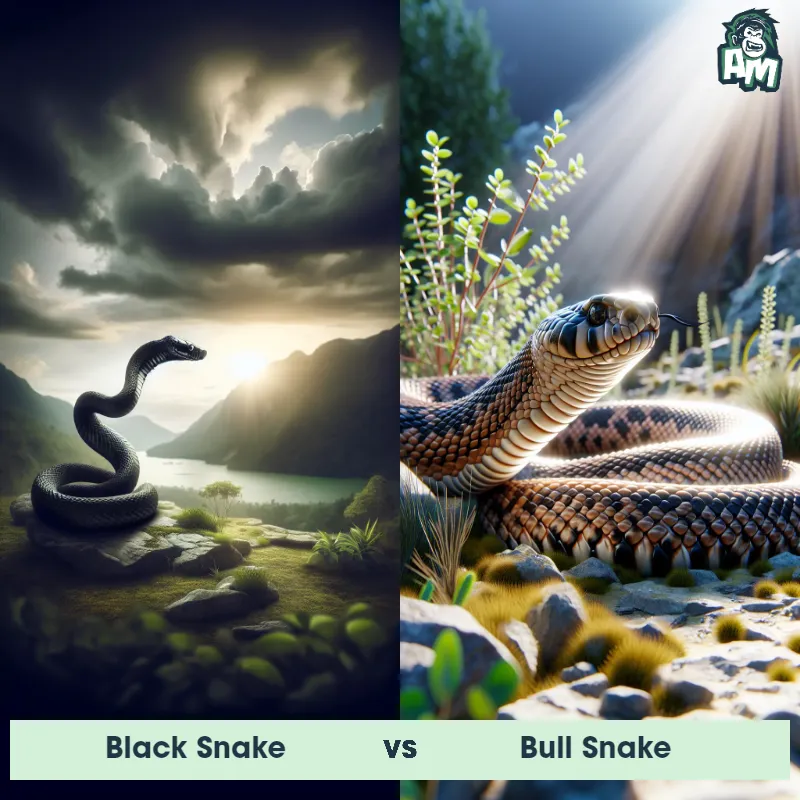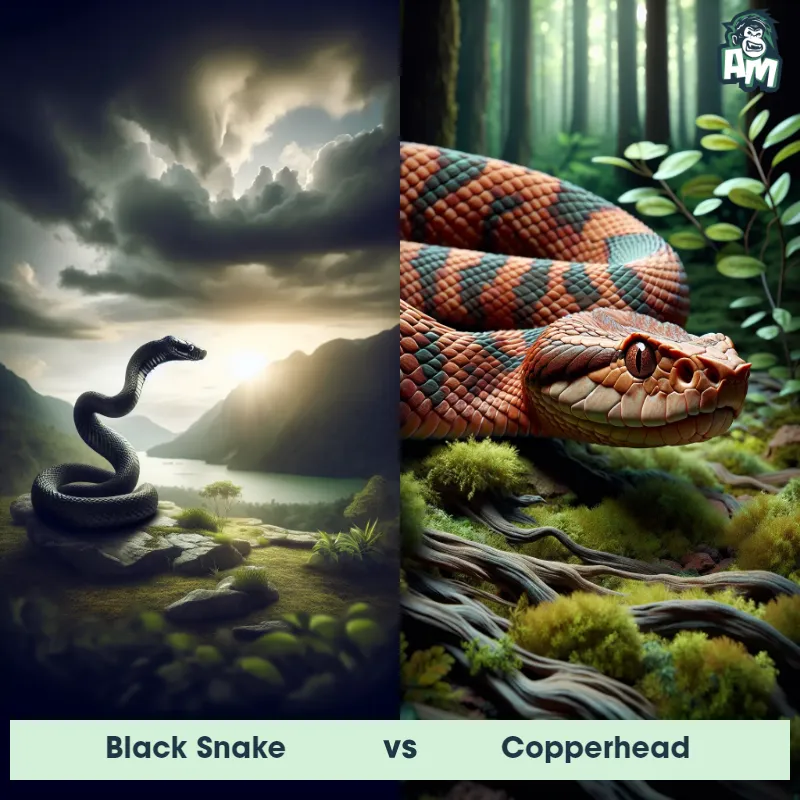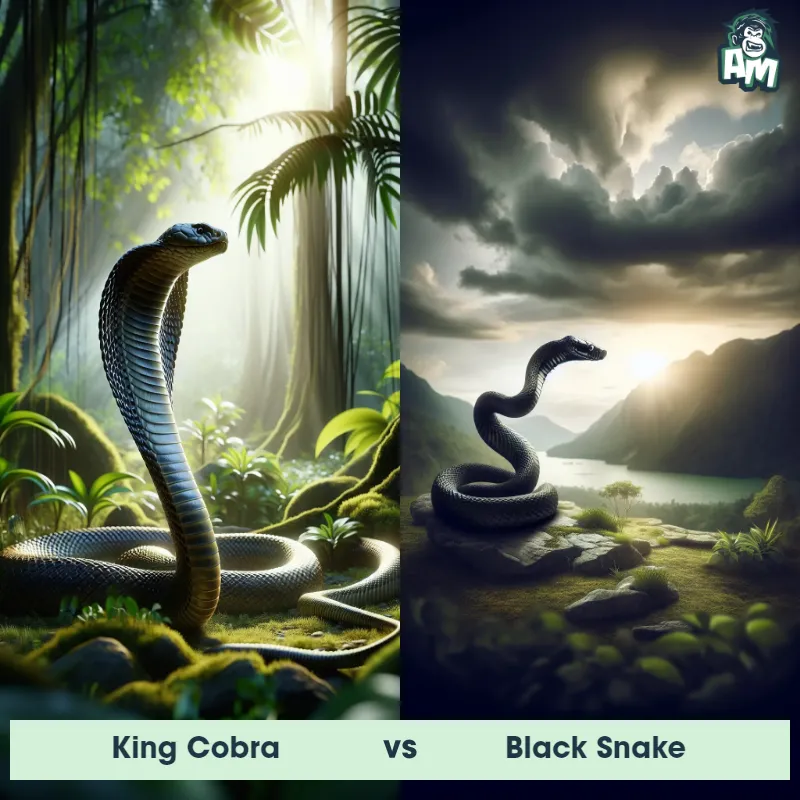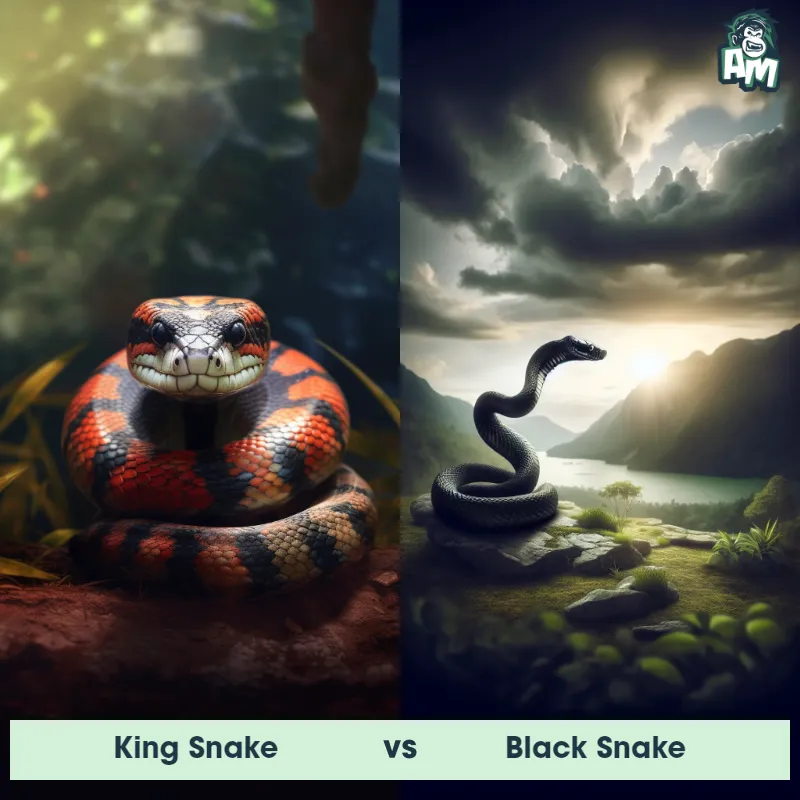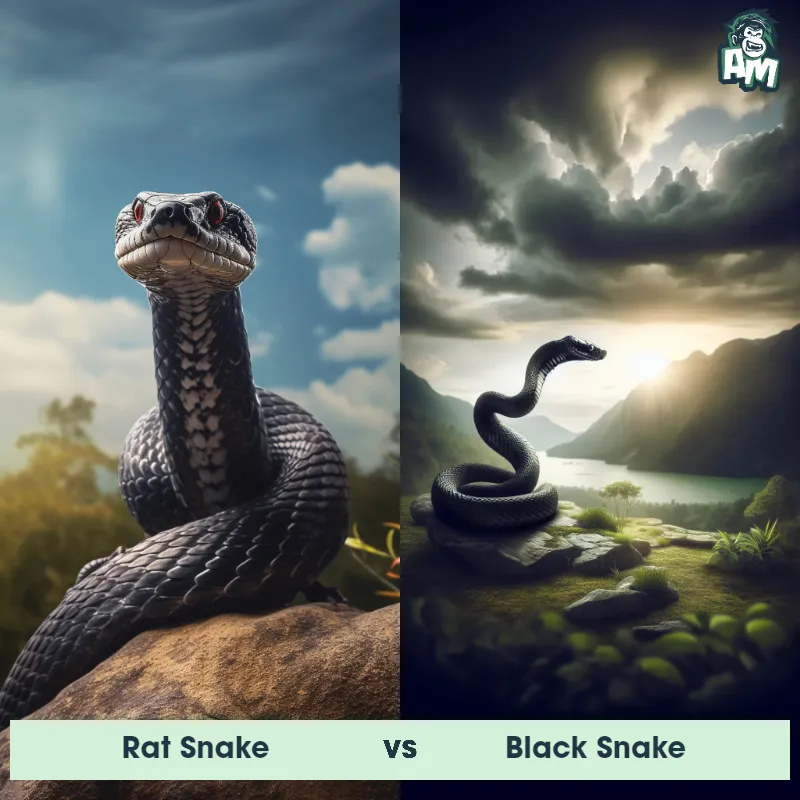The Black Snake
The Black Snake, also known as the Eastern Black Rat Snake, is a non-venomous snake species that can be found in North America. It is a relatively large snake, with adults measuring between 4 and 8 feet in length. This species has a glossy black coloration on its body, and its scales are smooth and shiny. It has a slender body shape and a long, tapering tail. The Black Snake is known for its agility and speed, making it an excellent climber and swimmer. It is a constrictor and feeds on small mammals, birds, and their eggs.
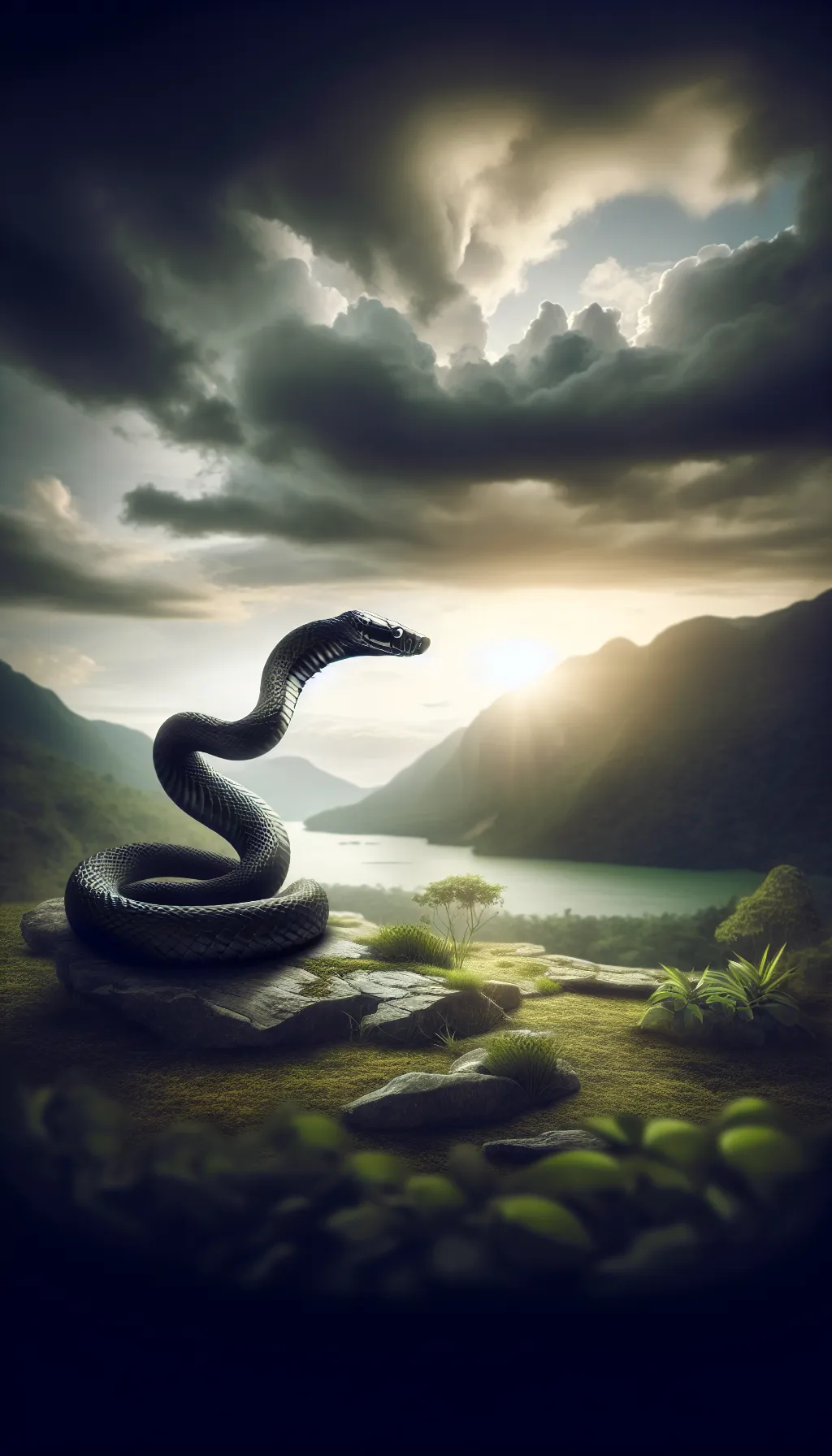
| Black Snake | |
|---|---|
| Size | Up to 6 feet (1.8 meters) |
| Weight | 2lbs (0.9 kg) |
| Speed | 8mph (13km/h) |
| Key Strength | Speed and agility |
| Biggest Weakness | Lack of venom |
| Scientific Name | Coluber constrictor |
| Family | Colubridae |
| Habitat | Various habitats including forests, grasslands, wetlands, and farmlands |
| Geography | Found in various regions across North America |
| Diet | Primarily feeds on rodents, small mammals, birds, and eggs |
| Lifespan | 10 years - 25 years |

The Black Snake
The Black Snake, also known as the Eastern Black Rat Snake, is a non-venomous snake species that can be found in North America. It is a relatively large snake, with adults measuring between 4 and 8 feet in length. This species has a glossy black coloration on its body, and its scales are smooth and shiny. It has a slender body shape and a long, tapering tail. The Black Snake is known for its agility and speed, making it an excellent climber and swimmer. It is a constrictor and feeds on small mammals, birds, and their eggs.
![[object Object] Gif](https://tenor.com/view/black-snake-slither-gif-3919099274309690325.gif)
Fun Fact: The Black Snake is an expert at mimicry and can imitate a rattlesnake by vibrating its tail, making it appear more dangerous than it actually is.
| Black Snake | |
|---|---|
| Size | Up to 6 feet (1.8 meters) |
| Weight | 2lbs (0.9 kg) |
| Speed | 8mph (13km/h) |
| Key Strength | Speed and agility |
| Biggest Weakness | Lack of venom |
| Scientific Name | Coluber constrictor |
| Family | Colubridae |
| Habitat | Various habitats including forests, grasslands, wetlands, and farmlands |
| Geography | Found in various regions across North America |
| Diet | Primarily feeds on rodents, small mammals, birds, and eggs |
| Lifespan | 10 years - 25 years |
Black Snake Matchups
We use AI to simulate matchups between the Black Snake and other animals. Our simulation considers size, strength, and natural predatory behaviors to determine the most likely outcome.
Black Snake: Diet, Predators, Aggression, and Defensive Behaviors
What do Black Snakes eat?
Black Snakes primarily feed on small mammals such as mice, voles, and rats. They are also known to consume birds, eggs, and other reptiles. Their diet consists mainly of warm-blooded prey, which they hunt and kill by constricting them with their powerful bodies.
Do Black Snakes have any predators?
Although Black Snakes are formidable predators themselves, they do have a few natural predators to worry about. Predators such as birds of prey, larger snakes like kingsnakes, and even some mammals like raccoons and opossums may prey on Black Snakes. However, their cryptic coloration and secretive nature often help them evade detection.
Are Black Snakes aggressive?
Black Snakes are not typically aggressive towards humans unless threatened or cornered. They are known to defend themselves by biting if they feel threatened, but their venom is not harmful to humans. In general, they prefer to avoid confrontations and will retreat if given the chance.
Do Black Snakes fight with other snakes?
Black Snakes are not particularly known for engaging in combat with other snakes. Instead, they use their impressive climbing abilities and agility to evade potential threats. They are solitary animals that primarily focus on hunting for prey and defending their territory rather than engaging in physical confrontations.
How do Black Snakes defend themselves?
When threatened, Black Snakes have several defense mechanisms to protect themselves. They may mimic the behavior of more dangerous snakes by vibrating their tails to mimic a rattlesnake's warning sound. Additionally, they may release a foul-smelling musk or musk in order to deter predators. Overall, their first line of defense is to simply flee from the threat.
What is the biggest weakness of Black Snakes in a fight?
Although Black Snakes are powerful predators, their biggest weakness in a fight is their vulnerability to larger predators and aggressive animals. Due to their relatively small size compared to some predators, they may struggle to defend themselves against larger threats like eagles, hawks, or even domestic pets. In a fight, their best defense is often to retreat and find safety.
Fun Fact: The Black Snake is an important predator in its ecosystem and helps control populations of rodents and other small mammals, making it valuable for pest control.
Fun Fact: When threatened, the Black Snake can flatten its body and hiss loudly, mimicking the behavior of venomous snakes as a defensive strategy to deter predators.



